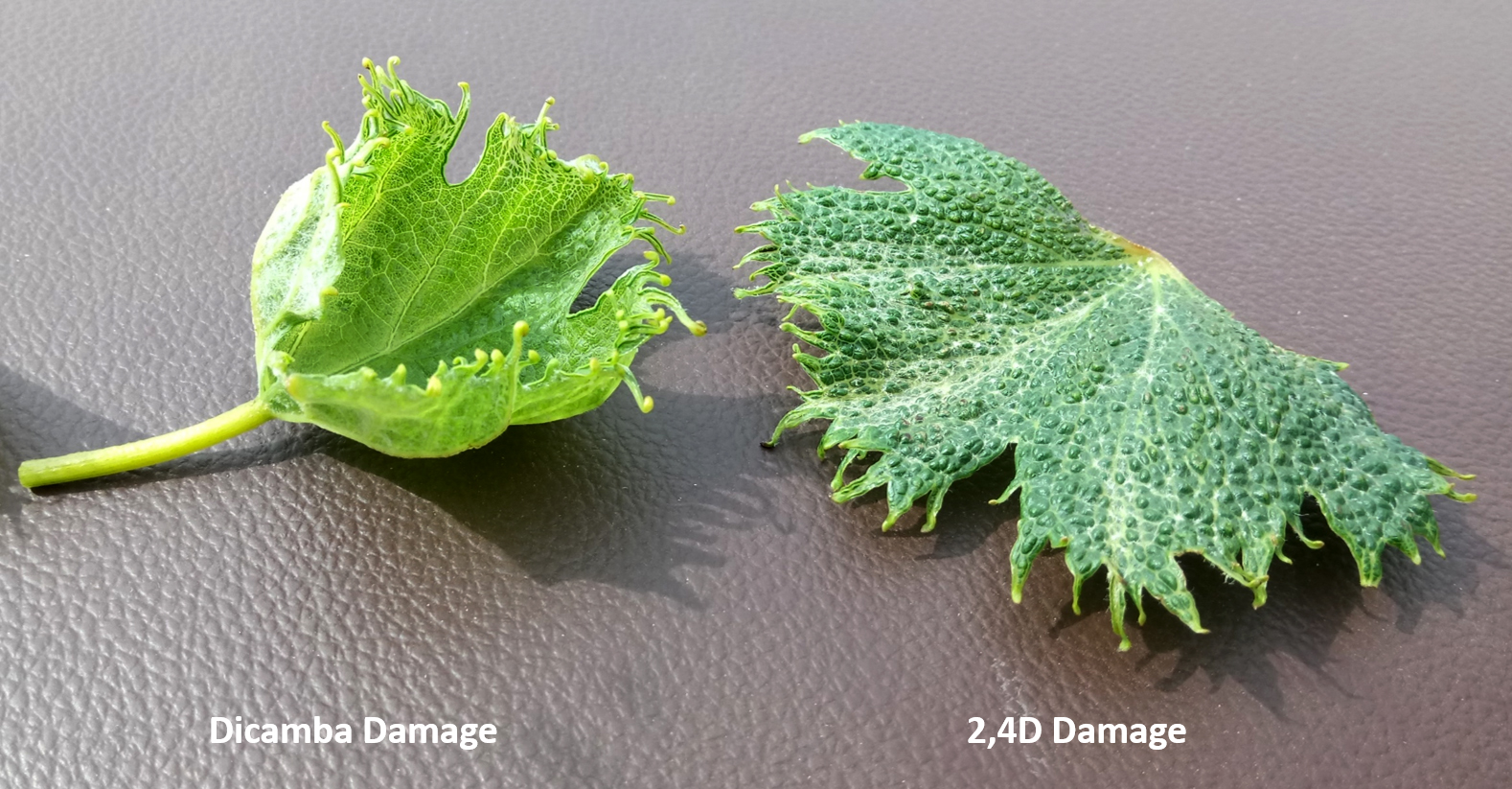This is the time of year where we receive numerous reports of off-target herbicide exposure. Grapevines and fruit trees sensitive to growth regulator herbicides, including phenoxy, benzoic, and pyridine classes of compounds. 2,4-D and dicamba are the most common products, and they are used widely in corn and soybean production. Damage can range from minimal leaf distortion (Figure 1) to severe damage, crop loss and vine/tree death. Injury can be especially damaging this time of year when plants are rapidly growing.
What can you do to avoid injury?
- Leave a buffer zone between potentially treated fields and sensitive crops
- Inform County and State Departments of Transportation about the location of sensitive crops as they may be spraying along roads, railroads, etc.
- Create a Driftwatch account and indicate the location of your sensitive crops. Driftwatch is a voluntary communication tool that enables crop producers, beekeepers, and pesticide applicators to work together to protect specialty crops and apiaries through the use of mapping programs. Driftwatch communicates the presence of your vineyards, orchards and/or other herbicide sensitive crops to commercial applicators and adjacent farms. There is no fee to register your site. Note: you must be a commercial grower or have at least 1/2 acre to register your site. Sign-up as a specialty crop producer here. Sign-up as an applicator here.
- Communicate with your neighbors and encourage the following:
- Avoid highly volatile formulations of herbicides
- Do not apply herbicides when the wind is blowing towards sensitive plants, ideally when a light breeze is blowing away
- Minimize vaporization by spraying when temperatures remain below label temperature restrictions
- The use of sprayer application techniques that minimize drift, such as high-volume nozzles that produce coarse droplets and/or shielded sprayers
For more information:
Watch Out for: Grapes
Avoiding Injury to Grapes from Off-Target Herbicide Exposure
Herbicide Injury and the Problem of Spray Drift
